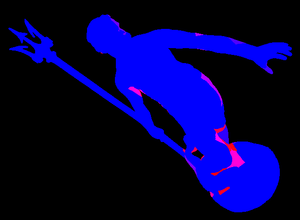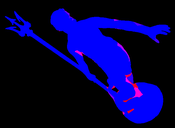Information
- Publication Type: Conference Paper
- Workgroup(s)/Project(s):
- Date: November 2007
- ISBN: 978-3-540-76855-9
- Series: Lecture Notes in Computer Science, volume 4841
- Publisher: Springer
- Location: Lake Tahoe, Nevada/California
- Lecturer: Jean Pierre Charalambos
- Editor: Bebis, G.; Boyle, R.; Parvin, B.; Koracin, D.; Paragios, N.; Tanveer, S.-M.; Ju, T.; Liu, Z.; Coquillart, S.; Cruz-Neira, C.; Möller, T.; Malzbender, T.
- Booktitle: Advances in Visual Computing (Third International Symposium on Visual Computing -- ISVC 2007)
- Conference date: 26. November 2007 – 28. November 2007
- Pages: 106 – 117
- Keywords: occlusion queries, levels of detail, occlusion culling
Abstract
We present a new method for integrating hierarchical levels of detail (HLOD) with occlusion culling. The algorithm refines the HLOD hierarchy using geometric criteria as well as the occlusion information. For the refinement we use a simple model which takes into account the possible distribution of the visible pixels. The traversal of the HLOD hierarchy is optimized by a new algorithm which uses spatial and temporal coherence of visibility. We predict the HLOD refinement condition for the current frame based on the results from the last frame. This allows an efficient update of the front of termination nodes as well as an efficient scheduling of hardware occlusion queries. Compared to previous approaches, the new method improves on speed as well as image quality. The results indicate that the method is very close to the optimal scheduling of occlusion queries for driving the HLOD refinement.Additional Files and Images
Additional images and videos
Additional files
Weblinks
No further information available.BibTeX
@inproceedings{CHARALAMBOS-2007-HLOD,
title = "Optimized HLOD Refinement Driven by Hardware Occlusion
Queries",
author = "Jean Pierre Charalambos and Jir\'{i} Bittner and Michael
Wimmer and Eduardo Romero",
year = "2007",
abstract = "We present a new method for integrating hierarchical levels
of detail (HLOD) with occlusion culling. The algorithm
refines the HLOD hierarchy using geometric criteria as well
as the occlusion information. For the refinement we use a
simple model which takes into account the possible
distribution of the visible pixels. The traversal of the
HLOD hierarchy is optimized by a new algorithm which uses
spatial and temporal coherence of visibility. We predict the
HLOD refinement condition for the current frame based on the
results from the last frame. This allows an efficient update
of the front of termination nodes as well as an efficient
scheduling of hardware occlusion queries. Compared to
previous approaches, the new method improves on speed as
well as image quality. The results indicate that the method
is very close to the optimal scheduling of occlusion queries
for driving the HLOD refinement.",
month = nov,
isbn = "978-3-540-76855-9",
series = "Lecture Notes in Computer Science, volume 4841",
publisher = "Springer",
location = "Lake Tahoe, Nevada/California",
editor = "Bebis, G.; Boyle, R.; Parvin, B.; Koracin, D.; Paragios, N.;
Tanveer, S.-M.; Ju, T.; Liu, Z.; Coquillart, S.; Cruz-Neira,
C.; M\"{o}ller, T.; Malzbender, T.",
booktitle = "Advances in Visual Computing (Third International Symposium
on Visual Computing -- ISVC 2007)",
pages = "106--117",
keywords = "occlusion queries, levels of detail, occlusion culling",
URL = "https://www.cg.tuwien.ac.at/research/publications/2007/CHARALAMBOS-2007-HLOD/",
}


 Preprint
Preprint


